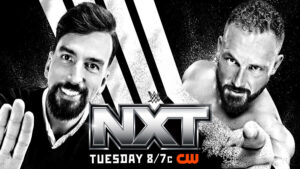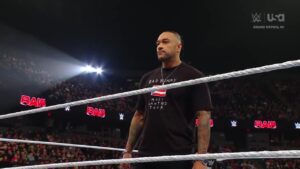Our perception of history, like a wrestling card, can be subject to change when you get reading, you listen to sources you might not actively seek out and then keep digging.
Selective Spotlighting
In recent years, I have begun more and more to consider how much of the history taught to me while at school, by gatekeepers and within my culture can be selective. The light shined on the past illuminates some aspects of history while casting (actively or invertedly) shadows over other events and people.
As an English and History graduate, started a challenge two years ago to bring more diversity to my bookshelves and learning. I wanted to read and listen to different perspectives from writers different from me. One of my first audiobooks was David Olusoga’s Black and British: A Forgotten History. It spotlighted aspects of black history in the UK that traditionally has not been neglected or selectively discussed.
Black people have been in the UK since the time of the Romans. Some were wealthy, important and prominent civilians. Black people were present as far back as Tudor England. One of the most prominent musicians of Henry VIIIs court was a black trumpeter called John Blanke. That black sailors and soldiers played an important part in British wartime history. There are black sailors being depicted on the bronze relief of the “Death of Nelson” in London’s Trafalgar Square.
This got me wondering recently, are there other black wrestling figures that I do not know of? There had to be black wrestlers before pioneers likes Bobo Brazil, Ernie Ladd, The Junkyard Dog and Ron Simmons. The latter, various sources, from the WWE network to the internet told me was the first black world champion. I found there was a lot I didn’t know. There is also a lot I still have yet to explore that I have only scratched the surface of.
References and My Limitations
This article’s focus is on spotlighting two aspects of a vast topic. First, the origins of wrestling of wrestling across the African continent. Secondly, I am going to spotlight a handful of the black wrestling pioneers I learned of and their wrestling “firsts”.
I will mention some aspects of racism, discrimination and prejudice these individuals overcame but it will not be something I discuss extensively. This is not to undermine these individuals’ experiences of racism, something as reader we should be aware existed and impacts these wrestlers lives in and outside of the ring. Rather to exemplify how these black pioneers overcome adversity, that at times, threatened to end their lives.
Where appropriate, I am going to include links to sources like a good historian. This is not just so you can fact check me (tell me in the comments what I have gotten wrong). This is also to encourage “each and every one of you” to do your own research. Expand your knowledge if you choose. Several pioneering black wrestlers who I will mention have been profiled in past articles for Last Word on Pro Wrestling. There will be a link at the bottom to articles on other black wrestling pioneers who previous writers have also discussed.
Wrestling in Africa
Usually, when we discuss the origins of wrestling in the West, our first point of reference is usually the Ancient Greeks. Maybe the Romans too. Hence the term Greco-Roman wrestling. In Ancient Egypt, wrestling was a popular sport and played a role in military training. Yet it was not limited to these civilisations. Wrestling as a sport, cultural and religious practice has existed across the world in various forms.
Across the African continent there are still varied types that are still active and developing, besides the western inspired Soft Ground Wrestling Uganda that has recently been a social media phenomenon. If you are an MMA fan, it is worth checking out footage of some of the following West African folk wrestling styles that are still extremely popular spectator sports
One of the most popular and prominent which draws huge crowds is Laamb, Senegalese wrestling. It has existed since 14th century. One of the first documented and oldest participates was Boukar Djilak Faye who excelled in competition. The sports origins were rooted as part of harvest festival celebrations to determine the strongest man in the community. Its modern form feels a lot like pro wrestling in its spectacle. Matches are accompanied by music dance and ceremonial performances.
Variations and regional styles of wrestling exist with their own distinct twists. Boreh in The Gambia; Evala in Togo; KoKowa or Kokawa in Nigeria and Niger and Nuba wrestling in the Sudan.
From the Start
Black history in American is inherently connected to the slave trade and slavery. Enslaved Africans brought their traditions and styles of wrestling with them. While they continued to wrestle for cultural reasons, it would be wrong to omit that some white slave owners made black enslaved men fight for the amusement in boxing and wrestling. It was also a means as well to pacify resistance and rebellion.
Before and during American Civil War, the Irish-style of collar-and-elbow wrestling became to gain more popularity. It is famously touted how Abraham Lincoln was a wrestler. Post-Civil War, in the northern states, black athletes also competed. The first documented and most well-known African-American wrestler was Viro Sam, was also known as Black Sam. Born into slavery in Buford, South Carolina in 1854, Sam moved north after the Civil War to pursue a boxing career.
It is believed Small impressed an experienced wrestler, Mike Horogan, with his strength and skills. This resulted in Horogan training Sam who would go on to have 63 wins over 10-year career. Sam won the Vermont Collar and Elbow Championship, twice. You can read Jamie Greer’s profile on Sam here.
The First Black World Champion (Pre-Kayfabe)
The 1920s is generally believed that kayfabe became the norm for professional wrestling. When the majority of big matches changed from shoots to works. Although there are believed to have been worked matches prior to this point.
Prior to Bearcat Wright (who was the first black world champion, winning the WWA World Heavyweight Championship in 1963, who you can read about here), the first black world champion was not African American.
The Jamaican-Scottish catch-as-catch-can wrestler, Frank Crozier was not only the first black world champion. Crozizer won in 1909 the Alhambra Tournament in London to win the Lonsdale Belt and the World Middleweight Championship. Crozier also became the first black wrestler to travel the world.
His image was even printed on collectable cigarette cards of wrestlers. Crozier could not retain or regain the championship in the years that followed but you can read more about Crozier here.
The First Segregated Black World Champion
Regis Siki was the grandson of two enslaved African Americans and was born at the end of the 20th century. At the time pro wrestling events were still heavily segregated and when African Americans were featured on cards it was only in competition against other African American wrestlers.
Siki was deemed to be such an instant hit with fans that it was suggested he might challenge for the World Heavyweight Championship but racism and politics meant this never happened. However, in 1924, Siki made history was recognised as the first world champion on the African American circuit. The championship, called the “World Colored Heavyweight Championship” (disclaimer: I only use this term for historical purposes, as this was the title’s official name, and as a reflection of this time frame).
Regis became the first globetrotting world champion, taking and defending the championship in Europe. Abroad, Regis was also free to compete against all comers and a was a box-office draw. You can learn about his fascinating life and experiences in Europe here. Again, Jamie Greer has written an excellent full profile here that goes more in depth on Regis’ achievements in.
His star power also caught the eye of Hollywood. Siki was cast in multiple films, including 1927’s Tarzan and the Golden Lion. It was suggested also the legendary director Cecil B. DeMille wanted to cast Siki for a part in The King of Kings. However, Siki was apparently too big.
The First Black Megastar
“The lady’s pet and the man’s regret.”
Sweet Daddy Siki, also called (but not related to the previously mentioned) Regis Siki. Sweet Daddy broke down segregation barriers across multiple territories. He was also a box office draw in Stampede Wrestling in Canada where he had a huge impact on the Canadian wrestling scene. At his peak he was an attraction at the Maple Leaf Gardens.
Sweet Daddy found his break when the DuMont Networks, which at the time competed with NBC and CBS, showed a range of wrestling related shows that allowed pro wrestlers to make themselves household names.
Siki was one of the first black entertainers many TV viewers witnessed. With help from the original “Nature Boy” Buddy Rogers, Sweet Daddy got the attention of Vince McMahon Sr and was able to work for a time in New York.
Later Sweet Daddy challenged Rogers for the NWA World’s Heavyweight Championship in Greensboro, North Carolina. Siki became the second black wrestler to ever challenge for the ten pounds of gold. The first being Luther Lindsay, who you can read about here. This was not without risk.
The Klu Klux Klan threatened to kill Siki if he touched Rogers. They likewise threatened Rogers with death also if he touched Siki. The racial hatred from the KKK was even more intense as Siki being married to a white woman. The match was waved off quickly after a kick after first contact. Klan members surrounded the ring.
However, this lead Siki, as a heel, to begin a gimmick working across various territories where he would wrestle against white competitors. In many promotions this helped to break and bring down the colour barrier. Many, including WWE Hall of Famer, Adam Copeland refer to Siki as “the Jackie Robinson of the wrestling industry”.
Bringing Style to Wrestling
Sweet Daddy’s impacts was also felt on wrestling fashion thanks to inspiration from Etta James. Siki dyed his hair blonde, wore sequinned robes and large sunglasses like Jackie Kennedy.
His fear was candy-striped in the era when male wrestlers just wore black trunks and he wore cut-away white books, the type The Rock would also use much later. This level of flamboyance of presentation, both wardrobe and on the microphone, inspired white wrestlers who have often been credited as the innovators of these styles.
There are white wrestlers who acknowledge their debt to Sweet Daddy as a wrestler and character. Bret Hart credits Siki with helping him define his wrestling character as Sweet Dadddy was the first wrestling character that came to his mind.
Sweet Daddy also used his charm and talents to cross over into other forms of media. He became a DJ and a country music singer and releasing four albums across the 1970s.
Further reading
If you would like to read more articles from Last Word on Wrestling related to Black History Month, there are links to profiles on other historic black figures such as Bobo Brazil, The Original Black Panther Jim Mitchell and Ethel Johnson here.
More LWOS Pro Wrestling
Header photo – CBC – Stay tuned to the Last Word on Pro Wrestling for more on this and other stories from around the world of wrestling, as they develop. You can always count on LWOPW to be on top of the major news in the wrestling world, as well as to provide you with analysis, previews, videos, interviews, and editorials on the wrestling world.






